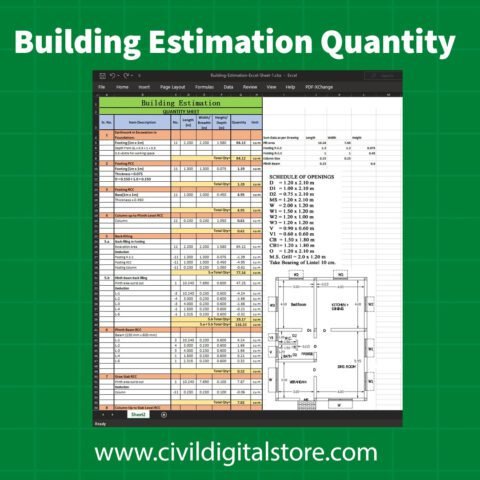Calculation Staircase Quantity
Calculation Staircase Quantity When planning a construction project that involves building a staircase, it is essential to accurately calculate the quantity of materials required. This includes determining the number of steps, risers, treads, and other components needed to complete the staircase. By following a systematic approach and using the appropriate formulas, you can ensure that you have the right amount of materials for your staircase construction.
1. Determine the Total Rise
The first step in calculating the staircase quantity is to determine the total rise, which is the vertical distance from the finished floor level of the lower floor to the finished floor level of the upper floor. To measure the total rise, use a tape measure or a laser level to determine the height difference between the two floors.
For example, if the lower floor is at a height of 10 feet and the upper floor is at a height of 12 feet, the total rise would be 2 feet.
2. Determine the Desired Riser Height
The next step is to determine the desired riser height, which is the vertical distance between each step. The riser height is typically regulated by building codes and can vary depending on the location. Check with your local building department to find out the specific requirements for your area.
As a general guideline, the riser height should be between 6 and 8 inches. For example, if you decide on a riser height of 7 inches, divide the total rise by the desired riser height to determine the number of risers needed.Calculation Staircase Quantity
In our example, dividing the total rise of 2 feet (24 inches) by a riser height of 7 inches gives us a result of approximately 3.43. Since we cannot have a fraction of a riser, we round up to the nearest whole number. Therefore, we would need 4 risers.Calculation Staircase Quantity
3. Determine the Tread Depth
The tread depth is the horizontal distance between the front edge of one step to the front edge of the next step. It is important to choose a tread depth that provides enough space for comfortable walking. The recommended tread depth is between 10 and 11 inches.
To determine the tread depth, divide the total run (horizontal distance covered by the staircase) by the number of treads. The total run is typically determined by the available space and design requirements.
For example, if the total run is 8 feet (96 inches) and we have 4 treads, dividing 96 inches by 4 gives us a tread depth of 24 inches.Calculation Staircase Quantity
4. Calculate the Number of Treads
Now that we have determined the riser height and tread depth, we can calculate the number of treads. The number of treads is equal to the number of risers minus one, as the top step does not require a tread.
In our example, we have 4 risers, so we would have 3 treads.Calculation Staircase Quantity
5. Calculate the Number of Stringers
Stringers are the structural supports that run along the sides of the staircase and provide support for the treads and risers. The number of stringers needed depends on the width of the staircase and the spacing between each stringer.
As a general rule, you should have a stringer on each side of the staircase, as well as additional stringers at regular intervals to provide adequate support. The spacing between stringers should not exceed 36 inches.
To calculate the number of stringers, divide the total run by the maximum spacing between stringers and round up to the nearest whole number.
For example, if the total run is 8 feet (96 inches) and the maximum spacing between stringers is 36 inches, dividing 96 inches by 36 inches gives us a result of approximately 2.67. Rounding up to the nearest whole number, we would need 3 stringers.
6. Determine the Quantity of Other Components
In addition to the steps, risers, treads, and stringers, there are other components that you may need to consider when calculating the staircase quantity. These include handrails, balusters, newel posts, and any decorative elements.
The quantity of these components will depend on the design of your staircase and the specific requirements of your project. It is important to carefully plan and measure each component to ensure that you have enough materials to complete the staircase.
Conclusion
Calculating the quantity of materials needed for a staircase is an important step in the construction process. By following the steps outlined above and using the appropriate formulas, you can ensure that you have the right amount of steps, risers, treads, stringers, and other components to complete your staircase project. Remember to check with your local building department for any specific regulations or requirements that may apply to your area.Calculation Staircase Quantity
Follow on Facebook click here
More Software on click here










